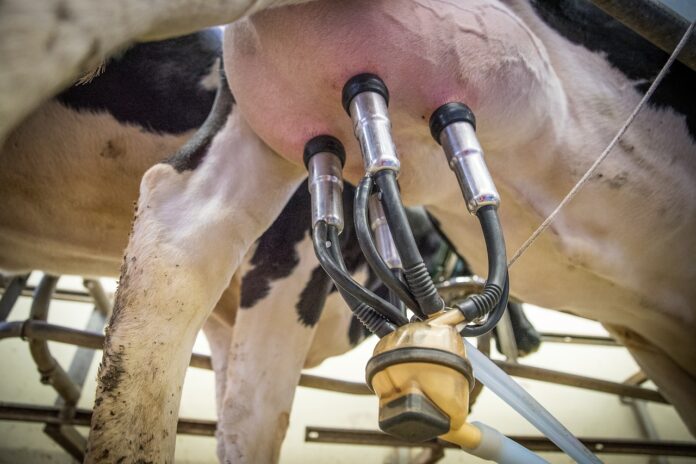During lactation, cows can become infected from both environmental and contagious mastitis organisms.
In this news article, we provide our readers with some tips from Michelle McGrath, assistant programme manager at AHI – Animal Health Ireland – who outlines how to help prevent both during the lactation period on your dairy farm.
Firstly, evaluate the cow’s environment – look at collecting yards, roadways, around water troughs, and sheds if feeding inside.
Block off access to cubicles if they are not being used. If housing was an issue on your farm last winter and unless you plan on reducing cow numbers, begin planning now to increase cow accommodation.
Having at least 11 cubicles per 10 cows during the housing period is vital to allow for normal cow behaviour, maximizing hygiene and minimizing the risk of mastitis, she advises.
Other possible actions include clipping tails to keep cows’ udders and teats clean and assessing the milking routine.
This includes wearing gloves, having a consistent routine, ensuring the teats are clean and dry, fore-stripping, post-milking teat disinfection and being calm in the parlour – all of which will help reduce the risk of mastitis.
She advises carrying out milk recording to identify problem cows and using a California Mastitis Test (CMT) to identify problem quarter(s).
Collect a sterile sample and send to the lab to identify the bacteria causing the mastitis and the best treatment to use. Do not forget to record any treatments given.
Disinfect cluster
Milk problem cows last or disinfect the cluster after milking a cow with a high SCC, either manually with diluted peracetic acid or automatically using a cluster flush system.
“Each cluster that milks one infected cow has the potential to infect the next 5-7 cows it milks if not disinfected,” she warms.
Routine machine maintenance between services by examining the machine regularly, including air admission holes and the vacuum gauge.
Changing your liners
Listen to the pulsator; watch milk entering the receiving jar and check vacuum shut-off buttons are working properly.
Check regulators and listen to and check air filters. Also, check the drain valves on pulsator airlines, and vacuum pump-oil level and oil drop rate.
“Check liner condition and alignment and change liners after every 2,000 milkings,” she advises.
“This works out at approximately every 125 days (4 months) in a 12-unit parlour that milks 96 cows.”
“Or, alternatively, every 125 days (4 months) in a 16-unit parlour that milks 128 cows, or every 200 days (6 ½ months) in a 20-unit parlour that milks 200 cows.”
“Finally, on teat scoring, check teat ends when the cluster comes off, as teat end damage may indicate a problem with the machine,” she concludes.
Other farming news article on That’s Farming:





